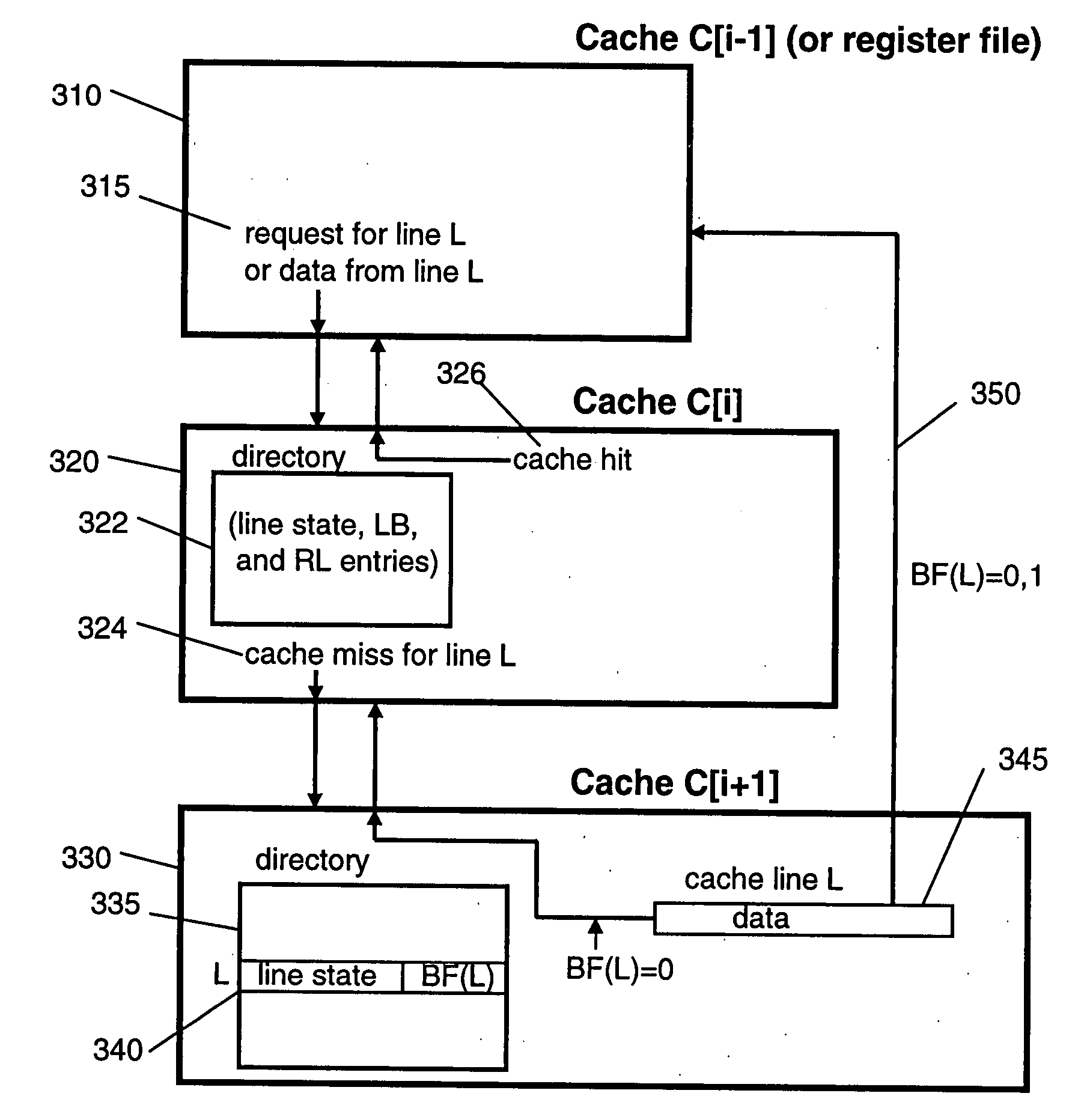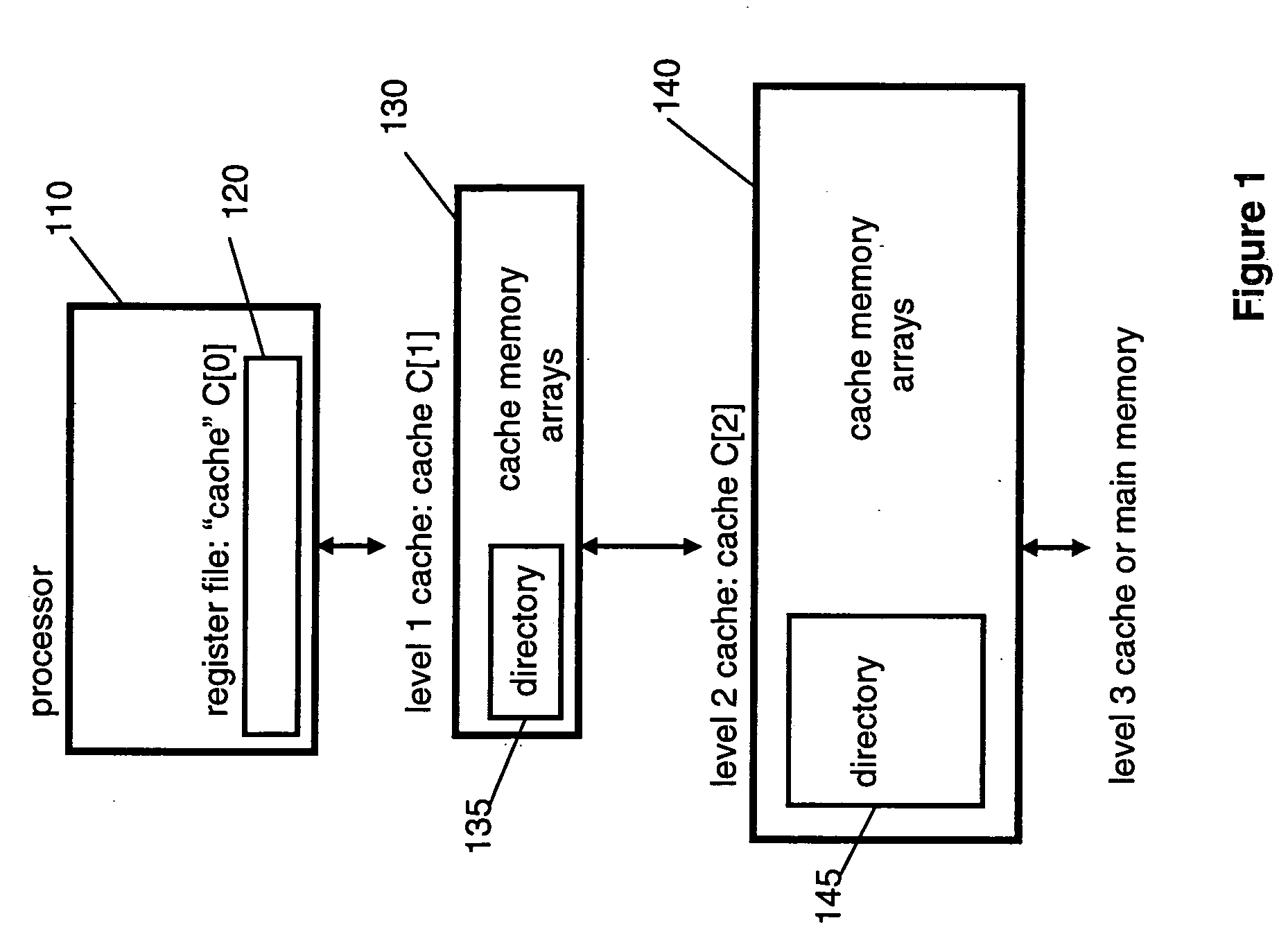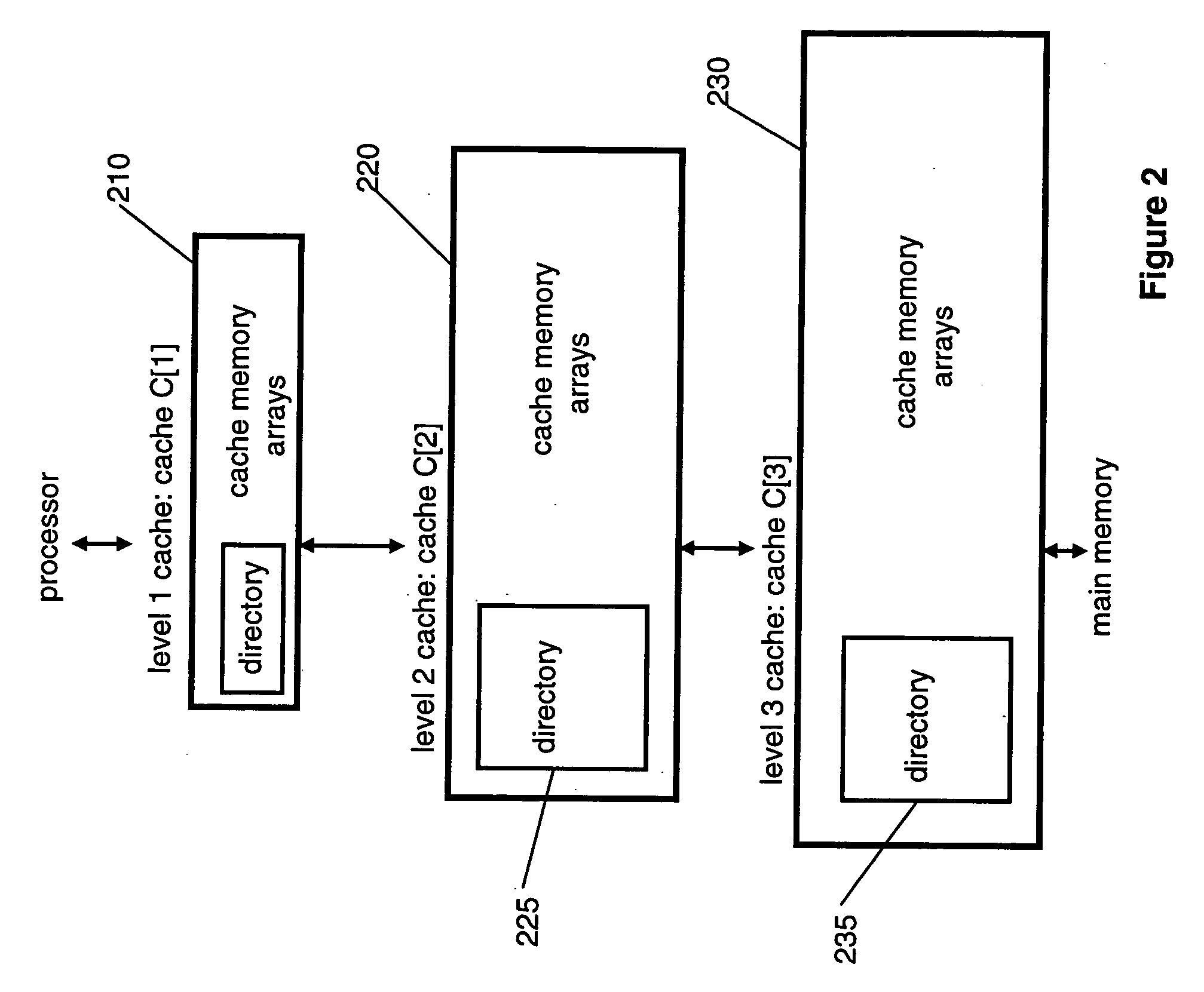Enabling and disabling cache bypass using predicted cache line usage
a cache line and usage technology, applied in the field of computer system multi-level cache architectures, can solve the problems of reducing system performance, unable to maintain usage information, and no work describes the use of predictive mechanisms at cache line granularity in order, so as to increase the increase processor performance, and reduce the effect of l1-l2 data transfer bandwidth
- Summary
- Abstract
- Description
- Claims
- Application Information
AI Technical Summary
Benefits of technology
Problems solved by technology
Method used
Image
Examples
Embodiment Construction
[0022] A first preferred embodiment will be described with respect to three caches at three levels in a cache hierarchy, C[i−1], C[i], and C[i+1], where it is understood that if i=1 then cache C[0] actually is made up of the processor registers.
[0023] The case in which i=1 is illustrated in FIG. 1. In this example “cache” C[0]120 is made up of the processor register file. Cache bypass involves transferring data requested by an instruction issued by the processor 110 directly from the L2 (level 2) cache C[2]140 to the register or registers, bypassing the L1 (level 1) cache C[1]130. This takes place when, as determined by the L1 directory 135 and L2 directory 145, the cache line containing the requested data is resident in the L2 cache C[2]140 but not resident in the L1 cache C[2]130.
[0024]FIG. 2 illustrates the case in which i=2. In this example the cache hierarchy includes an L1 (level 1) cache C[1]210, an L2 (level 2) cache C[2]220, and an L3 (level 3) cache C[3]230. Cache bypass...
PUM
 Login to View More
Login to View More Abstract
Description
Claims
Application Information
 Login to View More
Login to View More - R&D
- Intellectual Property
- Life Sciences
- Materials
- Tech Scout
- Unparalleled Data Quality
- Higher Quality Content
- 60% Fewer Hallucinations
Browse by: Latest US Patents, China's latest patents, Technical Efficacy Thesaurus, Application Domain, Technology Topic, Popular Technical Reports.
© 2025 PatSnap. All rights reserved.Legal|Privacy policy|Modern Slavery Act Transparency Statement|Sitemap|About US| Contact US: help@patsnap.com



